Heritage
Chief Joseph
“Hinmaton Yalatkit”, Nez Perce (c. 1832-1904)
Chief Joseph was a peace-minded eloquent political leader and acclaimed military genius. The Nez Perce lived peacefully in Idaho, hunting and trading with other tribes. They welcomed and fed Lewis and Clark in 1805 marking the beginning of a half century of peaceful co-existence with white people.
However starting in 1855 a series of treaties were forced on Nez Perce calling for relinquishing control of 95% of the 13 million acres where they had live, hunted and fished and to settle on a small reservation. Bridling at these and other injustices the Indians ended up in a war with the United States in 1877. Chief Joseph led 300 warriors and 500 women and children in an epic four month long flight toward freedom through some of the most difficult terrain in the American West. His guerrilla campaign eluded pursuing U.S. troops over 1,300 miles brilliantly defeating the U.S. Army in 7 major battles. Hungry, cold, and outnumbered the before surrendering to General Nelson Miles within 40 miles of the Canadian border and sanctuary where he hoped to join Sitting Bull’s band.
After being held prisoner in Kansas, where five of his children died of disease, Chief Joseph became a tireless and well publicized champion for this people’s right to return to their homelands in Oregon’s Wallowa Valley. Chief Joseph was never allowed to return home. He died in 1904 at the Colville Reservation in Washington State.
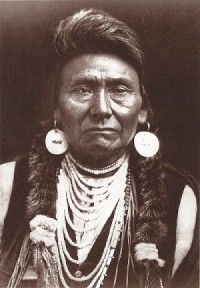
Photograph by Edward S. Curtis, 1903
Sitting Bull
“Tatanka Iyotaka”, Hunkpapa Sioux Leader (c. 1834-1890)
As spiritual leader and head of the Hunkpapa warrior societies, this legendary chief and vision seeker guided his people for nearly 40 years during the times when Manifest Destiny sought her fortune within the lands of the Sioux. Sitting Bull was a stalwart defender of his people’s lands and lifeways, which were threatened by the intrusion of white settlers and miners on treaty-guaranteed tribal territories, and by U.S. government efforts to concentrate Indians on reservations. These violations provoked war in 1876 in which Sitting Bull and other war leaders masterminded the defeat of U.S. troops at the Battle of Little Bighorn.
Faced by massive U.S. military counteroffensive, Sitting Bull and his 4,000 followers fled to Canada, but returned in 1881. After two years as a prisoner of war, Sitting Bull settled on the Standing Rock Reservation in present-day North Dakota, where he became a successful farmer and later toured with Buffalo Bill’s Wild West Show.
Yet he remained a staunch critic of U.S. Indian policy and became an apostle of the Ghost Dance – an Indian religious revival movement which spooked white officials at Standing Rock Reservation. In 1890, Indian police stormed his cabin sparking a bloody shootout in which Sitting Bull was killed. He was buried at Fort Yates in North Dakota.
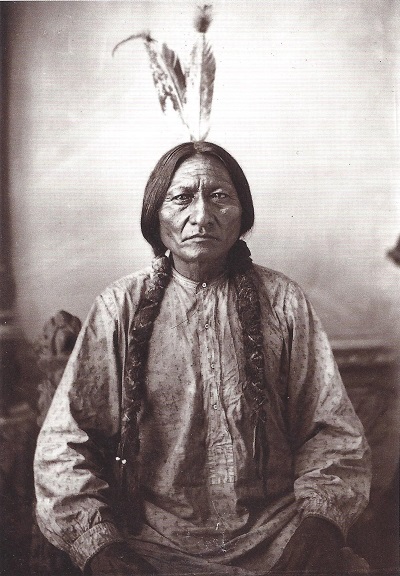
Photograph by David F. Barry, c. 1884
Low Dog
“Xunka Kuciyedan”, Oglala Sioux Chief (b. 1846)
This powerful and respected warrior became a war chief at age 14. In 1876 he joined Sitting Bull’s hostilities on the Little Bighorn and led his band against Custer and the 7th Cavalry. Low Dog’s account of the battle is one of history’s best known.
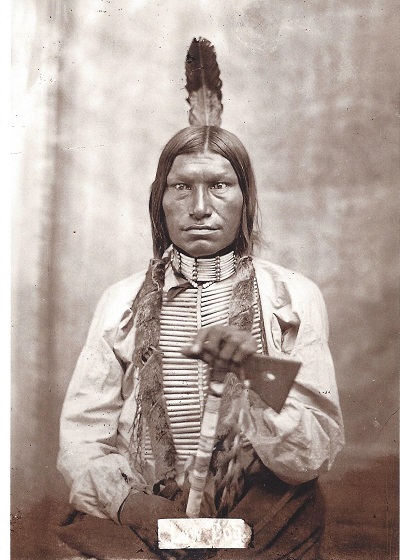
Photograph by David F. Barry, c. 1881
Rain In The Face
“Itomagaju”, Hunkpapa Sioux Chief (c. 1835-1905)
This fearless warrior became well known for his leadership during the Fetterman massacre, Red Cloud Wars, and the Battle of Little Bighorn.
Photography by David F. Barry, c. 1885
Kicking Bear
Miniconjou Sioux
Kicking Bear along with Short Bull was the principal leader of the Ghost Dance religion among the Indians at Pine Ridge and Standing Rock Agencies. The resulting terror marked the Sioux’s last armed conflict with the U.S. Army at the Massacre of Wounded Knee December 29, 1890.
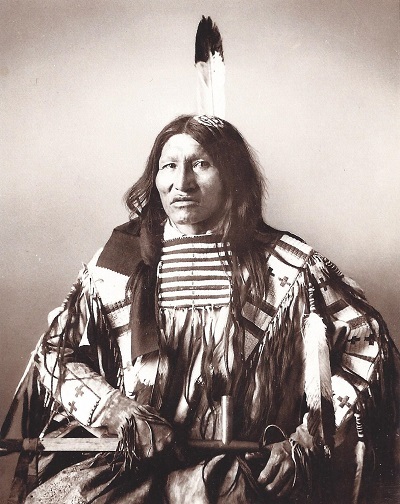
Photograph by William Dinwiddie, 1896
Little Big Man
Oglala Sioux Warrior
A fearless and respected warrior who fought along side of Crazy Horse against Bear Coat Miles. Little Big Man opposed the treaty and the commission that wanted to take the Black Hills from the Sioux. He was later made into an agency policeman by the whiteman, and some think that he was partially responsible for the death of Crazy Horse.
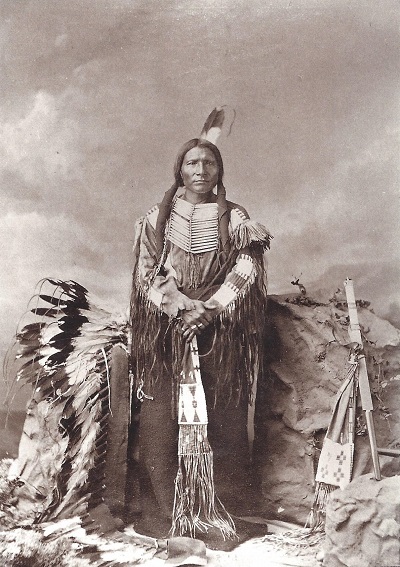
Photography by Charles Ml Bell, 1877
Red Cloud
“Makhpia-sha”, Oglala Sioux Chief (c. 1822-1909)
Red Cloud became the most important war leader of the Sioux and Cheyenne during the 1860’s in their opposition to the westward expansion of the Whites. He succeeded in virtually closing down the Bozeman Trail, and was one of the few Indians to win an armed conflict against the U.S. Army.
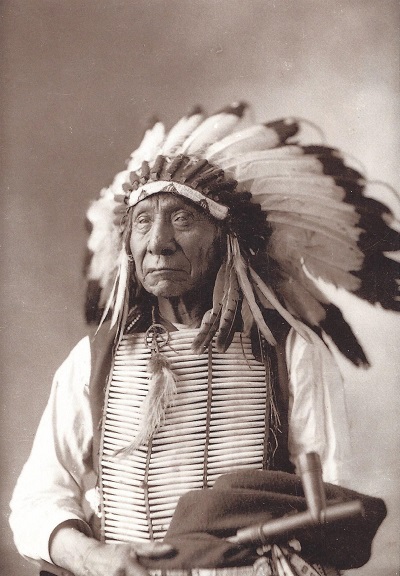
Photograph by David F. Barry, c. 1897
Short Bull
“Tatanka Ptecela”, Brute Sioux Medicine Man (1845-1915)
Short Bull, along with Kicking Bear was the principal leader of the Ghost Dance religion among the Sioux at the Pine Ridge and Standing Rock Agencies. The white man misinterpreted the pacifism of the new faith and the result was the death of Sitting Bull and the infamous massacre at Wounded Knee (Dec. 29, 1890).
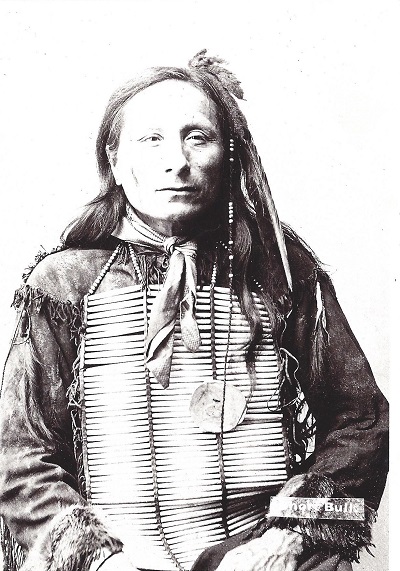
Photographer unknown
Crow King
“Kangi Yatapi”, Hunkpapa Sioux Chief (d. 1884)
During the Battle of the Little Bighorn, Crow King and his band of 80 warriors attacked Custer from the south, allowing Crazy Horse and Gall to encircle the doomed 7th Cavalry.
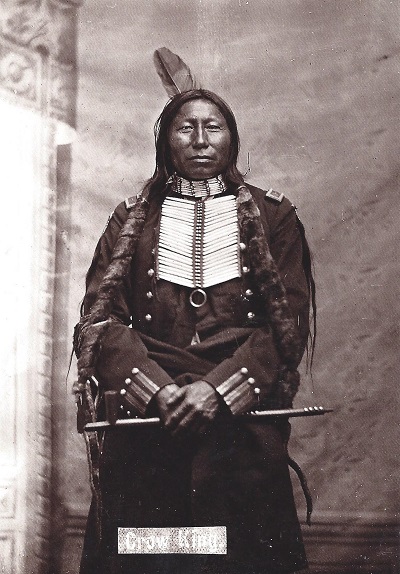
Photography by David F. Barry, c. 1881
Geronimo
“Goyathlay”, Apache Leader (c. 1829-1900)
A symbol of Native American resistance and warrior spirit, Geronimo acquired a reputation as a fearless fighter while wreaking vengeance on Mexican troops who had murdered his wife, children, and mother. When U.S. miners, settlers, and soldiers intruded on Chiricahua Apache lands in Arizona, Geronimo and his people resisted the newcomers, rejected U.S. efforts to settle his people on reservations, and were denounced as murderous renegades by angry whites.
Hunted relentlessly by U.S. soldiers and Apache scouts, Geronimo was finally persuaded to surrender in 1886, and was shipped as a prisoner of war to internment camps in Florida, Alabama, and finally Fort Sill, Oklahoma.
In his later years, Geronimo converted to Christianity, sold autographed photos of himself, and rode in President Theodore Roosevelt’s inaugural parade. Despite his notoriety, the old warrior was never allowed to return to his tribal homeland. He died a prisoner of war at Fort Sill in 1909. Yet Geronimo’s legend as a warrior survived. Today he is remembered as one of the greatest symbols of Native American resistance in the history of the United States.

© 2014 Copyright. All Rights Reserved Design & Developed by Expert Solutions ™

